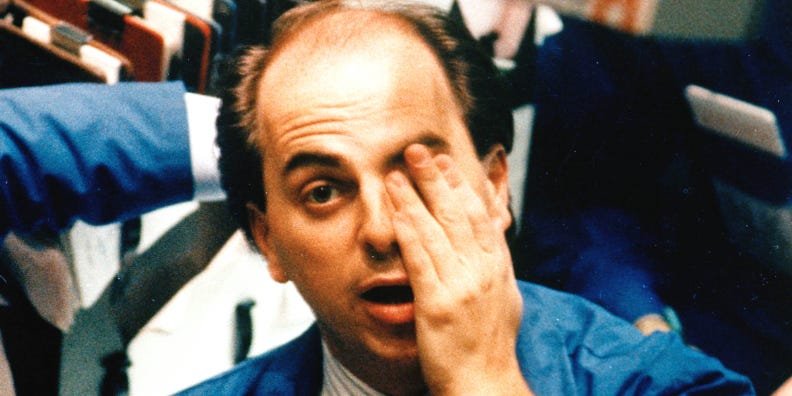Lance Roberts, CIO of RIA Advisors, said there are two big similarities between today’s stock market environment and the dot-com bubble era.
For one, companies are sprinkling AI references in earnings calls to whet investor expectations about future profits, akin to the eagerness of companies in the late 1990s to include “.com” in their names.
Mentions of AI in earnings reports are up 70% since the second half of 2022, according to an Accenture chart shared by Roberts in his June 11 memo.
RIA Advisors/Accenture
Second, just like in 2000, there is a small group of companies that are driving the overall stock market rally. For example, the top five companies on the S&P 500 by market cap now account for 27% of the index, even higher than the 18% they accounted for at the height of the Internet bubble.
RIA Advisor
Another statistic that illustrates this point is that only 30% of stocks have outperformed the S&P 500 since January.
But despite the similarities between now and 2000, Roberts is hesitant to say the market will suffer the same fate as it did then — a brutal drop of about 50%. He’s a bit more optimistic this time around, given the strong earnings performance of a handful of market-leading stocks. In 2000, even the performance of the top stocks was based almost entirely on future expectations, Roberts says.
Even so, investors need to keep in mind how long such strong earnings growth can continue, Roberts said.
He cited four factors that could jeopardize the AI giants’ revenue performance: Demand for AI will fall if companies don’t find it as useful as they hoped. Competition will increase in the AI space, driving down prices. Companies that supply AI to companies like Nvidia could start raising prices, reducing profits. Even if companies ramp up production, profit margins could remain the same if costs rise.
“We’re experiencing one of those speculative ‘booms’ again as anything related to artificial intelligence captures the imagination of investors,” Roberts said. “What’s constant is that analysts and investors once again believe that ‘trees reach the sky.'”
A sequel to the dot-com bubble?
Many comparisons have been made between 2000 and today, and one area of concern is market valuation levels, with indicators such as the Shiller CAPE ratio approaching all-time highs.
Guru Focus
But as Roberts points out, there are some key differences. Jonathan Golb, chief U.S. equity strategist at UBS, highlighted some of those differences in a client note on Friday.
First, interest rates have fallen significantly and are less of a drag on growth stocks.
10-year Treasury yields for 1999 and 2024. U.S.
The CBOE Volatility Index (VIX) has also fallen significantly since before the dot-com bubble burst, indicating that investors are more optimistic about the market’s outlook.
CBOE Volatility Index for 1999 and 2024. Credit Suisse
But future market trends won’t just depend on AI trading. Investors largely expect the U.S. economy to avoid a recession in the coming months. But if inflation were to rise again or the Federal Reserve keeps interest rates high for an extended period of time, the economy could take a turn for the worse, forcing investors to lower their expectations.
But if the economy remains healthy, stock prices could continue to rise for some time to come, as long as better-than-expected profits continue to be reported.
“It’s not the same as 2000, but there are some similarities. Will it be different this time, or will the trees once again not reach the sky?” Roberts said. “Unfortunately, we won’t know for sure until we look back through the lens of history.”

